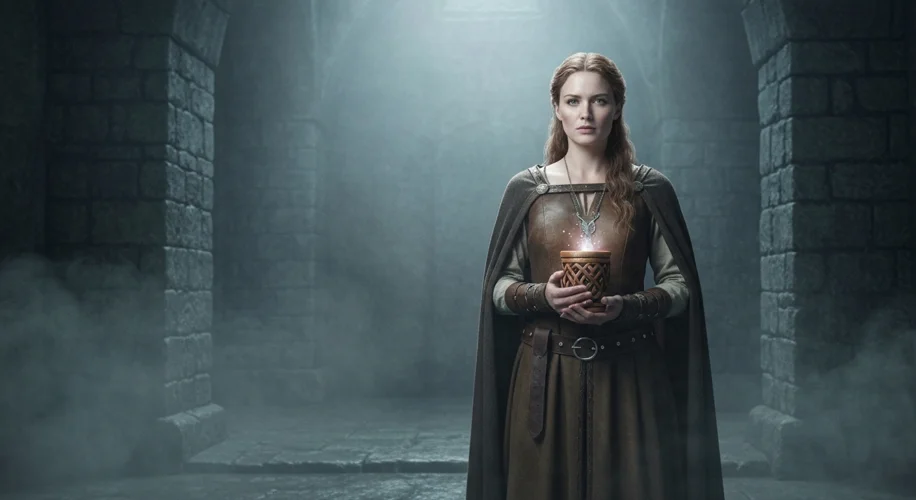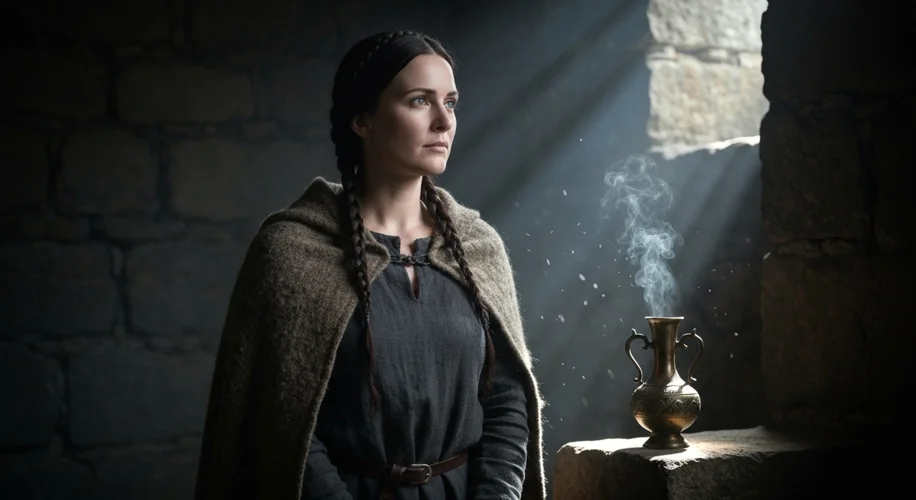In the rugged, mist-shrouded landscapes of medieval Ireland, where ancient myths and the raw power of nature intertwined, a peculiar and potent tale emerged from the sagas. It is the story of Derbforgaill, a woman whose very bodily fluids were imbued with a supernatural allure, a concept explored in the epic tale, ‘The Deaths of Lugaid and Derbforgaill’.
This narrative, rich with the lore of the Ulster Cycle, delves into a world where the boundaries between the natural and the supernatural were fluid. Derbforgaill, a figure woven into the fabric of Irish mythology, finds herself in a predicament that highlights a fascinating aspect of medieval Irish society: the apprehension surrounding female power, particularly when manifested through the body and its secretions.
The crux of the story, and the source of its enduring strangeness, lies in the potent nature of Derbforgaill’s urine. According to the tale, her urine possessed an irresistible attraction, a scent so captivating that it could draw men to her, or perhaps, draw them to their doom. This wasn’t merely a matter of personal hygiene; it was a sign of a deeper, more elemental power. In a society that often viewed female fertility and sexuality with a mixture of reverence and fear, such a potent bodily attribute would have been both a source of awe and a cause for significant unease.

The perception of bodily fluids in medieval Ireland was complex. While urine was generally seen as a waste product, it also held practical and even medicinal applications. It could be used for cleaning, tanning leather, and in some folk remedies. However, the tale of Derbforgaill elevates this common substance to an object of potent, almost magical, influence. It suggests a belief that certain individuals, particularly women of significant status or those touched by the otherworldly (the aos sí, or fairies), could possess an innate power that permeated their very being, manifesting even in their most mundane bodily functions.
This concept of ‘potent urine’ can be understood within the broader context of medieval Irish beliefs about fíanaigecht (wildness or untamed nature) and grád follaigthe (hidden love or affection). Derbforgaill’s power is not one that she actively wields with spells or incantations; it is an intrinsic quality, a wildness that emanates from her and affects those who come into contact with it. It speaks to a worldview where the natural world, and the human body within it, was teeming with unseen forces and hidden potentials.
The story also touches upon the precarious position of women in this society. While women could hold positions of influence, their power was often viewed with suspicion. Derbforgaill’s situation, where her unique attribute could lead to unwanted attention or dangerous entanglements, reflects this societal tension. The fear associated with her urine might also be interpreted as a fear of female sexuality and its potential to disrupt social order.
In essence, Derbforgaill’s ‘powerful urine’ is not simply a bizarre detail; it is a window into the medieval Irish psyche. It reveals a fascination with the extraordinary capabilities of the human body, a reverence for the untamed aspects of nature, and a complex understanding of female power that was both respected and feared. The tale serves as a potent reminder that history is not just about battles and kings, but also about the deeply ingrained beliefs and the peculiar stories that shape how societies understand themselves and the world around them.
The story of Derbforgaill, though centuries old, continues to provoke thought, reminding us of the vast and often surprising landscape of human belief and the enduring mysteries of the past.

